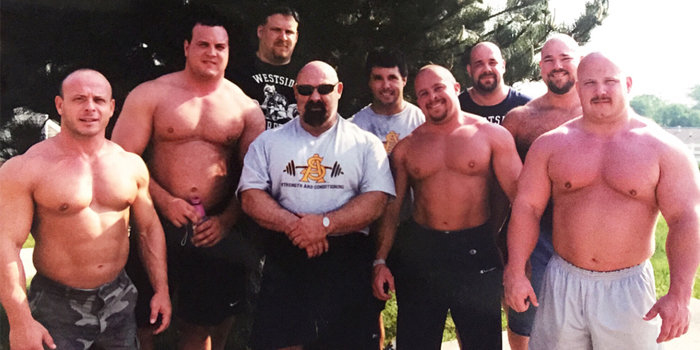
When I first came to Westside, I was driving up on the weekends and training at the “Bingo Hall Location,” which was also on Demorest Road and, at the time, was a commercial gym. It wasn’t long till Louie closed that gym, giving half the equipment to a gym Matt Dimel Opened called MM Gym, and the other equipment (the PL equipment) moved to the Sullivant Location. I entered the picture full-time at that location but split my time between there and Matt Dimel’s place for several months. Limited at the time with what I could do in the gym because I was in a cast, Matt’s place offered me machines I could use.
The “Boxer in the Basement” gym is where I started training with Kenny, Todd, Chuck, and Joe. Our crew lasted through that location and continued lifting together at the Demorest Black Location.
Joe McCoy was there before me (the early ’90s - 01) and had two WPC World Titles. He lifted at Westside for close to a decade.
Todd Brock was also there before me, but he was in and out for years due to work. Despite this, his total time spent at Westside was over a decade.
Kenny Patterson began at Westside well before the “Paint it Black” gym, around ‘86 or ‘87, and was still there close to when the gym moved to Westbelt Drive. Kenny’s first meet was in ‘88, when he was part of WSBB. He stayed a part of WSBB until around 2002, holding about 15 years (or more) of experience lifting at Westside.
Chuck Vogelpohl was also there before me and was a part of why I ultimately went to train there. Chuck got there before Kenny (it may be as far back as ‘85). It is safe to say that Chuck has at least two decades of experience lifting with Westside and three decades of competitive experience. Chuck was there for all of the Westside gyms, from Louie’s Garage to the location the gym is in today; he lifted through it all.
I started coming to Westside around ‘91 and became full-time in ‘93. I ultimately left the gym in 2005, but this is the Westside that I remember.
Written June 11, 2019
While my memory isn’t what it used to be, I’ll write out what I remember. I started training at Westside Barbell when it was still a commercial gym. It soon moved to a crappy hole-in-the-wall place where a resident boxer lived in the basement. I called this gym location the “Boxer in the Basement Gym.” Soon after came the move to the “Painted Black Gym,” which got its name from the painted black window so nobody could see into (or out) the gym. The “Painted Black Gym” is probably the gym and time that Westside Barbell is most known for.
RECENT: Add 100 Pounds to Your Squat — 5 Seminar Takeaways
Only a handful of people were there to move into that gym and were still around ten or so years later when the next move happened. These people included those who were there training every session or every week: Louie Simmons, Dorris Simmons, Chuck Vogelpohl, Amy Weisberger, and me. Several others were there this entire time, but I can’t say for sure that they were there every session, every week, or every year.
My point is the active Westside Crew was not as big as many think. MANY would visit, many would move, stay a few weeks, and leave, and numerous more would spend their vacations there. Westside wasn’t a vacation, that’s for damn sure. You also had no fucking clue what it was like to train there until you were there a couple of years. After three years, I would say you knew what it was really like. Any less, and you “were not and wouldn’t be Westside to me.”
Look, I know I was one of the biggest dickheads in the place, and you will find few who disagree with that. This was because I knew why I was there, what I was giving up, and after a while, what Louie was working to build. I took — and still take — pride in this.
Westside vs. The World
I highly suggest you see this documentary. You can find all the info on the documentary and where you can see it HERE.
This is some of what I remember…
Last month, Louie asked me to write down some of my memories from the gym during my time there (the mid to late ‘90s). When I first came, it was a commercial gym, which then moved to the “Boxer in the Basement” location and finally to the place in the projects.
I won’t be posting these stories, as they will be for Louie, but I may drop an occasional one here and there in my blog because, as I realized as I took notes today, there’s a lot! I didn’t just train there; Louie was my direct training partner. I traveled with him to all the meets, seminars, and trade shows and broke him out of the hospital after his partial shoulder replacement. I loved and hated that fucker.
When asked about my time at Westside, what always comes to my mind first are the rules we had. Most were nothing new to me since the lifters and groups I’ve trained with my entire life had the same philosophies. But all of the ones I had prior weren’t as “real” as they were at Westside Barbell, and I loved it! Some rules were stated, but others were learned and done so quickly.
It was an easy place to visit, stay, and train for a week or two. Those who did this saw a small fraction of the training club atmosphere and shared several meals with Louie. They saw the outer layer of the club, and I am sure they had great vacations.
I have been to many areas of the Caribbean and loved my stay. But I also know that living there year around would be 100% different than my one-week stay by the pool.
Over 95% of those who came to train and stay didn't last one month.
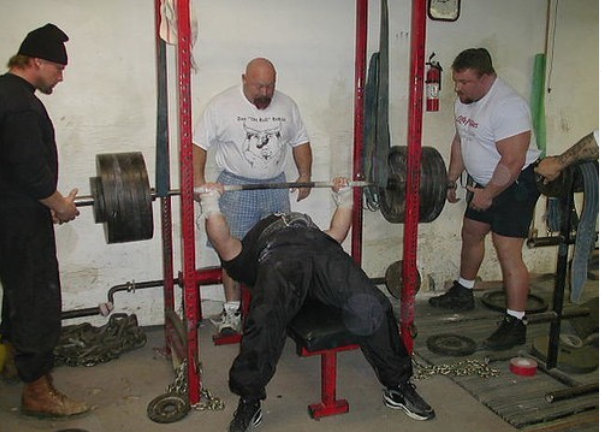
Some of the Rules I Remember
- Powerlifting had to be your No. 1 priority.
- Don’t miss sessions, EVER. Don’t be late, EVER! I saw and was part of kicking out lifters for those two.
- You compete or leave.
- Once you commit to the meet, you do it, no matter what. I never missed a meet and had many poor meets or bomb-outs because I lifted injured. Never back out!
- Make those less than you better than you
- Never sit during a dynamic squat or bench session
- Leave your drama outside the door. It took me years to discover that some of the guys I trained with were married. We talked shit, and we talked training. That was it.
- Go to meets to help your team and pay your own way there.
- ONLY enter the open division.
- Everyone trained the same lifts on the same day (except supplemental movements that were weak-point specific)
- Know the program
- There are an A.M. crew and a P.M. crew. No other crew. Train in one or the other — or not at all.
- Keep your hands off the board unless you were putting your name on it.
- No cameras.
- Make the gym better.
- If you get called out, step up.
- If your ego started to get the best of you, you would quickly be reminded to take it to the meet. In other words, shut the fuck up. It doesn't matter in the gym.
- Realize you don’t matter — your numbers do, and those are only as good as your last meet.
- Training hard was not expected. It was a given. If you couldn’t handle it, leave.
- Don’t be the one who worked the least. That would make you a “tweed,” and your exit would be soon.
- If you got on the cover of PLUSA, your lifting days wouldn't last much longer. Publicity was the kiss of death to a powerlifter.
- Stay out of the bullshit and let your lifting do the talking.
Some lesser-known items and ones that would not get you kicked out but were always noted:
- Do not get married — a spouse will fuck up your training
- Don’t bring wives or girlfriends to meets
- Don’t have kids (they will also fuck up your training)
- Don’t date strippers or use crack.
If you think I am joking, ask some guys from the ‘90s. They will tell you. Better yet, ask their wives or ex-wives. That would make a great reality TV show: The Wives of Westside Barbell.
I will be the first to say, while I was there, we didn't know what training "optimal" was yet. Louie learned what too much was from watching us (and from HIMSELF, as he was right at the top of the mix - in his 50s). Good or bad, it fits the group's mentality from the ‘90s, so maybe it was optimal for us. In time he did learn what was optimal for training, but admittedly I didn’t listen, and neither did most of the others.

While this should be hardcore, and I am sure many of you are thinking, “That’s exactly how a gym should be,” “This is how we need to be thinking,” and so on. Let me continue to explain and supply examples to provide context.
Here are some of the “cool rules” I got to see and be a part of. I think many will see that the image and bravado of these rules are not the same as reality. Remember that none of these rules were ever explained to you or posted on the wall. You had to figure them out on your own.
Here are a few of the many situations I saw and was a part of when enforcing these rules. These demonstrate the reality of Westside:
5 Minutes
I watched a Top-5 ranked training partner, who might have been on the board at the time — a person with the most explosive squatting strength and potential I had ever seen in my life, someone I liked training with and had fun joking around with and had been training with us well over two years — get tossed out of the gym for being five minutes late — ONE TIME.
"Hey, you know what time it is?"
“Yes.”
"You know we start training at eight o’clock."
“I'm five fucking minutes late.”
"Get the fuck out."
“Are you serious? I’m five minutes late.”
"The rest of us are here 30 minutes early. Get the fuck out."
“Fuck you and this gym.”
Training Differently
I was part of a vote to kick out someone who had more than ten years of experience training at Westside. He had started at Westside long before me, and the vote was called because he wanted to train his deadlift differently and would be traveling out of town to do so once a weekend (on a day we didn’t train) and wouldn’t be missing ANY of our main training days. The vote count was in, and he was gone. You were either Westside or not Westside. There was no "almost Westside" or "kind of Westside." It was all in or nothing.
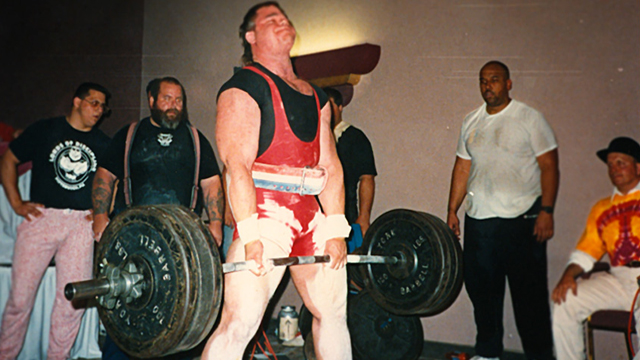
Bad Day
One day during max effort work, one of the B Crew Lifters, an 800-pound deadlifter (I say B Crew because he didn’t have his elite total yet, but was close), whose effort was not at 100% and was not “on point” (to our standard) got called out for it and didn’t back it up with the rest of his sets in training that day. Again, I was part of the vote, and another lifter with two or more years of experience at Westside was told never to return. All it took was one insufficient session, and this vote was unanimous because we all knew that shit could spread like wildfire.
This is the thought process behind this rule. If it's an A or B lifter, and the effort isn’t there, and they aren’t present enough to give their maximal effort on max effort day, it was seen as if they didn’t want to be there — they were on the edge of being out. It’s six to ten seconds of their life to do the lift — make it or not. If they can’t get their shit together for 10 seconds, they weren’t helping us. We didn’t train in a vacuum, so others saw this. What did those ranked under him think? Those who looked up to him? Those who were busting their asses that day to beat him? What did those listed over him believe? What did this do to the standard two decades of lifters set before us? In my opinion, FUCK THAT! There is no reason not to be able to pull your shit together for ten fucking seconds.
This stuff happens to all of us; HIS REACTION was the problem. Some dumbass excuse! If he was pissed off (I've had lousy max effort days that pissed me off until that same day next week when I made it right. By "pissed off," I mean bothered me every single day). We once had one that flat out said he lost his confidence. Who says that? In those cases, we busted their ass verbally — fiercely — and that's one of the many reasons I wanted to tear my car apart and destroy them all, as I was on the receiving end of this several times. We all were.
The issue here is that the lifter didn’t care, so why should we invest more time in someone who doesn’t give a shit when it’s one of our top priorities?
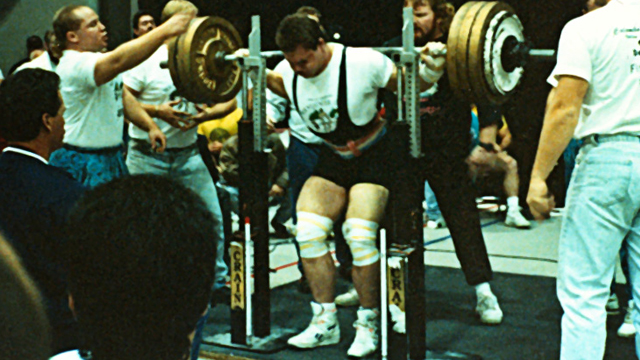
Helping at Meets
Many lifters who couldn’t make it to meets to help, for whatever reason, came to the gym that following Monday and were told never to come back.
Atlanta, Georgia, Texas, Florida. I was assigned to positions I wasn’t qualified for and to meets that were not on the list that Louie wanted me to do. I was broke AF and found a way to get there and back. It wasn’t easy. Once, it was a Greyhound bus, but there was no way I wouldn't be there to help and risk being tossed out.
Unless it was a meet Louie disapproved of, you could do it. You would be on his shit list, but NOBODY FROM THE GYM would come to help. You were on your own! I did this once and had to find a third party to help me lift in a friend's bench meet. I never did it again. It wasn't worth the bullshit.
Disrespect
Louie can be an asshole, and he’ll piss you off. He WILL get into your head, but one of the fastest ways to get your ass kicked out of his gym is to disrespect him. Talking shit and busting balls is one thing, but disrespect is another. If you don't like anything about him, you take it up with him or keep it in the gym. If you talk that shit outside of the gym and think you will stay, you’re wrong.
He wouldn't toss you out; we would. If you did this in front of others in the gym, there was a good chance you would not only be asked to leave, but you'd end up being physically tossed out the door.
To be honest, I could write more examples — an entire book of examples. The rules look good on paper, but it's another thing to live by them. I saw Westside was selling a poster some time ago of Louie's rules — many of the ones I covered were on there; there were others I forgot. All I thought about when I saw that was the number of gyms that were going to buy it and hang it up because "it's real," "cool," or "the way it should be." Yet I would bet not a single one will enforce any of them. It will just be a cool poster on the wall.
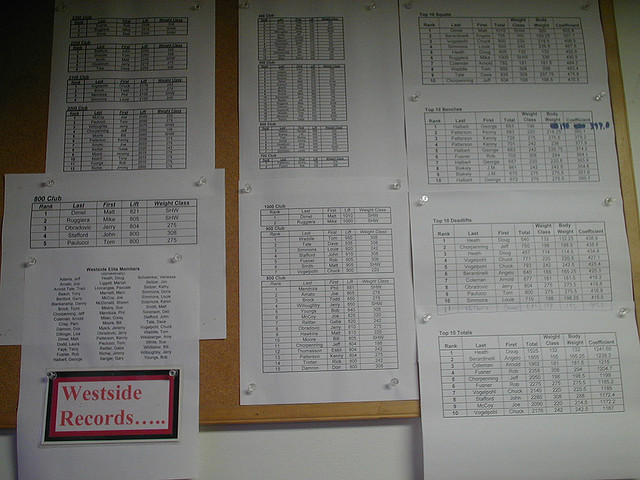
We didn't have a cool poster on the wall. We had these rules you had to figure out on your own that had severe consequences. Few lifters who ever trained in those four walls while I was there were never asked to leave or kicked out. VERY few. I am one of a small number, and I KNOW several votes were taken about me. Some of the club's biggest names were kicked out at one time or another. Fortunately, most of them made their way back. I am not sure if they were better or worse for it, but their numbers kept going up.
A lot of the time, it sucked, but in a fucked up way. I liked it; I liked the challenge Westside presented. I spent my entire gym life working to be the top dog in a gym and then find a stronger one and do the same. I knew when I ended up at Westside Barbell I would never be the top dog. Too many years, too many injuries, maybe because I didn't believe I could. I DID know I could outlast everyone. While I did fall short on that one, it was not because of my will or effort. My body couldn't take anymore, and I could no longer give the gym what it was built on — NUMBERS.
If I couldn't put up the numbers (my best or better), I was doing nothing to help the gym within those four walls. I did last well over a decade, which is FAR more than most, and while I wasn't done on my terms, I was not kicked out. Only those who have trained there for over a few years know how rare that is. Then again, maybe I am looking at this wrong because far better lifters than I were asked to leave.
Big Takeaway — Not to be Missed
Don’t get me wrong. I do not think anyone who trained there looks back at their time at Westside with ill will. There was far more good than bad, but I have never pretended it was easy, and I think it would be a disservice to paint a picture of all blue skies when it was cloudy, raining, or storming like hell most of the time.
We just learned to dance in the rain and live in hell if we had to.
I can’t begin to count the number of times I left that place wanting to tear the steering wheel of the dashboard and beat Louie, or many others, over the head with it. I'm not talking mad — I’m talking full-on pissed off!

I also knew every exit from my house to the gym (a 30-minute drive). I knew them because many days, I wanted to return home and not have to deal with the shit anymore. Not just the mental shit but the physical shit as well. It took me years to learn to deal with the mental game, play it, and master it, but it wasn’t easy. The physical part was also on me, as in my mind. I was already on borrowed meathead time before I got to Westside Barbell due to accumulated injuries. I had to learn and master the culture quickly because I wanted to become the best I could in the time I had left and not leave the sport asking, "What if?"
The professional side of me wanted to learn all I could from Louie Simmons. He earned my respect as a kid for taking the time to help me. Later, when I saw his knowledge and wisdom first-hand, I was amazed and wanted to know all he did. I had breakfast with him when I could afford it, and work allowed it. If we traveled to a meet, seminar, consult, or anywhere that allowed me to ride with him, I did. I am willing to bet that, after his wife, I have spent more time in the car with him than anyone else, ever.
Do you know what he talked about? Training! Always training!
I have posted this before, but I think it’s fitting to provide more context in this article on the time and changes happening around us.
For reference: in 1990...
- Milli Vanilli got busted for lip-syncing.
- Home Alone, Ghost, Pretty Woman, and Total Recall were popular movies.
- Friends, The X-Files, and The Fresh Prince of Bel-Air were among the most popular TV shows.
- I was using a beeper for work.
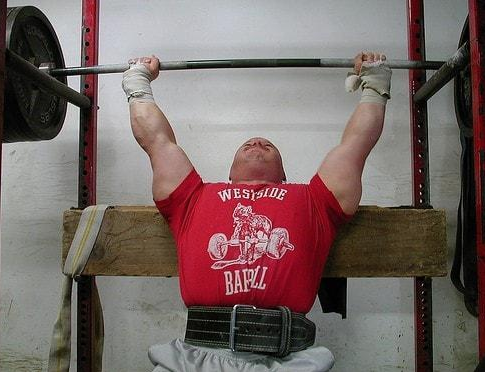
Westside Training Over the Years: 1992–2004
I can’t tell you what’s going on at Westside today. There are only a very small handful of people who can do that, and those people train at Westside Barbell.
What I can tell you is what I saw during the time I was there, from the early ‘90s to 2005. To list every change I remember in detail would take a book. However, I can list several things as I remember them and see what happens.
In short, and in no specific order, here are some of the changes that I saw:
- Bands were added.
- Chains were added.
- Weight releasers were added.
- Board presses were added.
- Floor presses were added.
- Dynamic effort cycles went from five weeks to three weeks.
- Max effort work cycled from three weeks to one week.
- An assload of new special exercises were added.
- The reverse hyper and glute ham raise became huge (from one day per week to 5–6x per week in some cases).
- General Physical Preparedness was added.
- Trap bars, dips, and overhead work were canned.
- Kettlebells were added.
- Stability balls were added.
- Mantarays came and went.
- Cambered bars were added.
- Dynamic effort work with safety bars was added.
- Lactic acid tolerance training was added.
- The Lightened Method was added.
- We moved gyms three times.
- The belt squat became a machine instead of a huge box with a hole in it.
- The sled mill was added.
- If you didn't work hard, you would be tossed out.
- Sometime after 2000, we started to implement powerlifting gear into the training.
- Powerlifting gear improved.
- I remember the GREAT day when the monolift was added — no more taking the weight out of the racks at Louie’s height.
- Circa maximal phases were added.
- Recovery became more important.
- Restoration sessions were added.
- Extra workouts were added for weak points.
- We became better at figuring out how to overcome sticking points.
- The 45-degree back raise was added.
- The back attack was added.
- Members came, and members went.
- It was always required that you help at meets.
- Suspended max effort work was added (concentric only).
- Teaching became a big part of the process. At one time, we had four guys writing articles and three doing seminars.
- Single leg work came and went.
- Standing ab work became vital.
- Louie came out of retirement.
- The record board began to change at every meet.
- The club's “top” list got very freaky and keeps growing today.
- We tore through four to five stereos.
- Fat bars were added.
- Percentages for dynamic work were lowered.
- If you were late for training, you could be kicked out.
- Grip work became more important.
- Timed work was added for recovery.
- Max effort waves that built on each other were added.
- We were tough on which max effort movements tested our strength and which ones built our strength.
- Weak point analysis was based on technical performance more than structure.
- Heavy ankle weights were added for GPP work.
- Weight vests were added for GPP work and sled dragging.
- Wheelbarrow work was added for GPP work.
- Speed training rest periods were slightly increased as band tension got heavier.
- Band tension was taken to extremes and then lowered somewhat to fit each lifter.
- Lat work for many of us dropped in daily volume but was done four days per week. For me, I had two row days and two pull-down days.
- Speed pulls were added after speed squats.
- Speed squat cycles changed and advanced with each meet, based on the results that the last group had.
- Technique remained the most important variable.
- The new guys never made the same mistakes we did, but they made their own. This is the progression of success.
- The roller hyper was added to the mix. This gave us a different way to do hypers and added variety and sessions per week.
- The plyo-swing was added, offering a way to build greater explosive strength.
- Decline max effort work came and went and then came back again.
- Belts squats were used more to unload the spine.
- Your feelings didn't matter; your total did.
- The Tendo unit was added. However, it told us what we already knew, so it was only used sparingly for testing. Having the device on made many lifters too concerned with what the machine read and distracted them from actually doing the lift. I was one of them.
- We were taught that we were only as strong as our weakest guy, and it was our job to make him better. The exact words used were more like, “Stop bitching about how weak he is and make him stronger. He’s weak because you suck as a training partner.”
- Strapped-up good mornings were a disaster.
- Although weight releasers were used sparingly, they gave very good results when used correctly.
- As the gym became more popular, the door was always open for coaches and lifters. The entire time I was there, I met close to 100 coaches and only saw three of them train or even try a movement. I met with even more lifters and never saw any of them train.
- Louie pissed me off well over twice a week, and if I did my job, I pissed him off more times per week than that.
- Louie would tell me the same damn thing 101 times and would finally stop when I did it on the 101st time. It was really what I needed to do in the first place, but I was too ego-driven to do what I sucked at. Some coaches think they have a hard job. Try walking into Westside and teaching those guys what to do! There’s only one way it will get done, and it’s by earning their respect “under the bar.”
- After 10 years, I finally got through one session without hearing AC/DC.
- Ultra-high reps were added for recovery—reverse band presses for 100 reps.
- Timed good mornings (five minutes) were added for a short time. THESE REALLY SUCKED.
- Timed dumbbell presses lasted longer.
- Just because they’re in the videos doesn’t mean we did rolling dumbbell triceps extensions for eight sets of eight (20-second rest) twice a week every week of the year.
- Doing 100 rep band pushdowns with the light (purple) bands for extra workouts twice a week makes a huge difference for many lifters.
- Floor presses with chains were added.
- The chain bench press was added (work up to 50 percent and add one chain per set until you max out).
- The front squat harness broke and was never replaced. Squats and pulls still went up, and our balls were saved.
- We discovered that you have a better chance of getting injured with triples and fives than with singles.
- Dynamic squat (speed squat) training evolved to include other bars outside the straight bar. These included cambered squat bars and safety squat bars.
- Dynamic bench work also evolved to include cycles of speed work on the floor, off low pins, and off boards.
- Bungee cords didn’t work as well as bands.
- The gear got better (bench shirts and squat suits), so training had to change. The strength work didn’t change, though, because the program was designed around getting stronger in and out of gear. However, the new gear added a new skill aspect to the sport. We added in some sessions just to get used to wearing the gear, but this didn’t happen more than four to five times for each meet (at the most). This may have changed since I left the gym, but I doubt it.
- More warm-up sets were added for each lift. You didn’t work up until you were ready.
- More control on max effort work was added. By this, I mean that smarter decisions were made. In the past, we just said screw it and loaded the bar whether or not it was a good day or a bad day. This is one thing that I feel has helped the newer guys stay healthier than we were in the past.
- Toward the last few years, if we felt beat up, we rested and just did supplemental work. This goes along with the previous point.
- Most speed pulls advanced into speed pulls with one or two double mini bands.
- In the beginning, all max effort work for the lower body was done raw, and we used to bust the balls of anyone who tried to use gear— even a belt. In time, the belt and briefs were used, and we were healthier because of it.
- Most people who think they can last there never will, and those who think they don’t belong will become one of the best. This will never change.
- All of us used to do the same max effort work regardless of what we wanted to do. When the gym moved, we did the things that we needed to do and not so much what everyone else was doing.
- Supplemental work became extremely important as time passed, as we all began to see what Louie had been telling us for years. As I like to say in seminars, “You can either train a lift or build a lift. The choice is yours.” Supplemental work builds lifts.
- Hamstring work is HUGE, but we never did Romanian Deadlifts or stiff-legged deadlifts. Hams were built using glute ham raises, pull-throughs, banded leg curls, squats, and pulls.
- Supplemental work was waved based on individual needs. At first, we just did what we did. In time, we stayed with one movement until it stalled and then moved on. In many cases, we knew what we needed to do, but we weren’t conditioned to do that movement. We would have to use other movements to build up to the movement we really needed to build the lift. For example, if I needed to do hanging leg raises so that my toes touched the bar, then I had a problem if I couldn’t do one. I would have to start with other stuff, such as pillars, knee up leg raises, and eccentric full leg raises, to work up to full hanging leg raises. We used and created many supplemental progressions like this. The same concept was also applied to many of the max effort movements differently. In this case, we would take what we were doing and what was working and find ways to make it more taxing and difficult progressively.
- From Day 1, every movement had a reason, or it wasn’t done.
- As benches got bigger, upper back work got more important. In many cases, it was done four times a week (dumbbell cleans, face pulls, and seated high rows).
- What I call “coaches” were created at a faster rate. When I first got to Westside, it took time to learn what was happening (how the training worked and what technical flaws to look for). Louie would point things out to us repeatedly until we began to think and notice new things on our own. We had a group of guys who trained together for a very long time, took it all in, and worked very hard to help each other get better. Many weak points were addressed and overcome. When new people were brought in, we quickly showed them what to look for in us so they could help us get better. Louie has always said, “We knew what Westside could do for them, but what would they do for Westside?”
- The learning curve got shorter as we became better teachers. When I speak to Louie, I see this curve getting even shorter (and quicker) with the newer lifters. What used to take a few years to do in both teaching and under the bar is now being done within months.
- When I first got there, most (but not all) exercises were standard. They became more specialized as needs changed.
- If you were not helping others, you would get kicked out.
- I’m very fortunate to have come to Westside when I did. Louie had already suffered many injuries and mistakes. By the time I got there, he had a hell of a lot figured out and had two decades of champions to back it up. I came in at a time where experimentation and learning were at an all-time high (at least this is what I think — Louie was doing it for years before I got there). He was getting the guys who were willing to try more new things to get better. At the time, Louie wasn’t training very hard, and I would venture to say that he was retired. Then one day, something was said to him: “Old man, you will never have 700 pounds on your back again.” That day was a huge turning point for Louie’s training and for the gym. In time, Louie kicked all of our asses in the gym (this is seen in many of the videos) and made a huge comeback. This gave us instant respect for him. Before, we had listened to what he said or did what he told us to do, but now we actually SAW what he had been telling us.
- Everyone who stayed and could last at least one year put over 100 pounds on their total.
- It’s a whole other ball game when you actually SEE what Louie says works, and all of a sudden, you believe it will also work for you.
- With each move, the bathroom got better.
- The last place had a garage door, making it easier to get more equipment in.
- It’s important to note that the training was and always is evolving. New things were added and tried. Some stuff worked, and some didn’t. The old stuff worked for us the same way it would for you today, but things only work for so long before you have to find new ways to advance. In many cases, the old things are what advanced us to the new ones. They are what prepared us for the new stuff.
- If you felt you were more important than the gym, you would be kicked out.
Before Westside, I was lucky to make four to five changes to my training in a year. I used the Western method of periodization and progressive overload. I changed what I could, but there were no checks and balances to work with as there were with Westside training. I didn’t have max effort work to gauge my progress or videos to show me how my bar speed was looking. My focus was simply on making everything stronger and bringing up my weak points. Training is more complicated than many make it out to be, but it’s still simpler than some think. The key is to understand the methods and use them to the best of your ability.
The gym was getting smarter — at one point in time, George Halbert, Jim Wendler, JM Blakley, Louie Simmons, and I were all writing articles for magazines. This is a testament to Louie Simmons, as he was teaching us all to teach others. We were not the only ones who understood the programming and training. MANY others in the gym could have also written articles but were in different careers.
Almost all of us got better at our chosen jobs or professions. The skills and lessons learned at Westside made us better at our jobs, businesses, and lives. This is NOT to say that putting it as our first priority didn’t have damaging effects. It did, and for many of us, they were bad, others worse, and for a few, it cost them everything. Many of us will pay the piper for the rest of our lives.
Here is a conversation I had with Kenny Patterson about our time at Westside. Kenny was there for 14 years, and we had 10 years of training together that overlapped — all during out time in the morning crew.
Since this has become a long article, I will add this excerpt from My Iron Evolution Series written for T-Nation.com.
The Mental Aspect of Westside Barbell
Over the years I was at Westside Barbell, many things changed that will go far beyond the scope of this article. The gym moved three times, it got smarter, more advanced, innovative, stronger, and better. Much better.
Though the key principles remain unchanged, I know things at Westside continue to evolve and improve. I'll only present what I was there to see, learn, and was a part of (1991-2005).
I can't tell you what's going on at Westside today. There are only a handful of people who can, and those people train at Westside Barbell. Anyone else is bullshitting you.
The Other Big Three
I've learned more from my time at Westside than any other period in my training life. There's no way one installment could do it justice. I also doubt anyone wants to read an article of Dostoyevsky-type length, although Crime and Punishment would be an appropriate subtitle.
To that end, the Westside period is going to be divided into three parts, after the three areas that must be accounted for in your training to avoid getting stuck: the physical aspect (what most are familiar with, including, but not limited to: the Repetition Method, the Dynamic Method, and Max Effort Method), the technical aspect (exercise technique, arguably the most important), and the rarely talked about mental aspect.
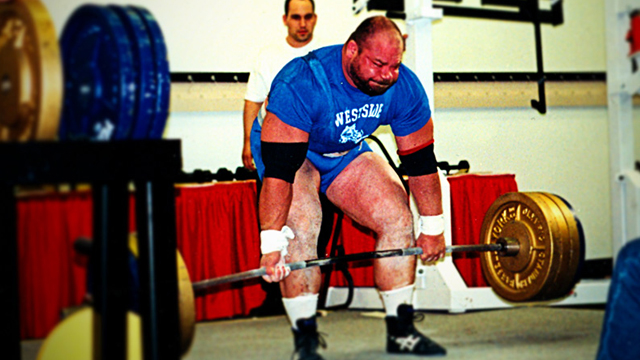
What is the Mental Aspect?
I often meet young lifters at seminars who are fascinated by Westside Barbell. They've read the articles, watched the videos, and have structured their training to best match the principles Louie presents in his Westside DVDs and certification courses. "I'd give anything to train at Westside," they gush.
I do my best to encourage them, but I know most wouldn't make it.
If Westside Barbell is anything like what I experienced, 90 percent of these lifters won't last a week. They might be able to withstand the physical pounding, but the mental stress would chew them up and spit them out.
Here's a test I use:
Young lifter: "I'd love to train at Westside."
Me: "If it were a perfect world and you could move to Columbus and train at Westside for three months, do you think you could put 50 pounds on your bench?"
Young lifter: "Absolutely!"
Me: "Then why don't you bench that now?"
That's the mental part. That's how I know they wouldn't make it. All the info is out there, between the Internet and certification courses and videos. But they focus on what they don't have, which is the ability to train within those four walls. That's how I know they don't want it.
That's how I know Westside Barbell would crush them.
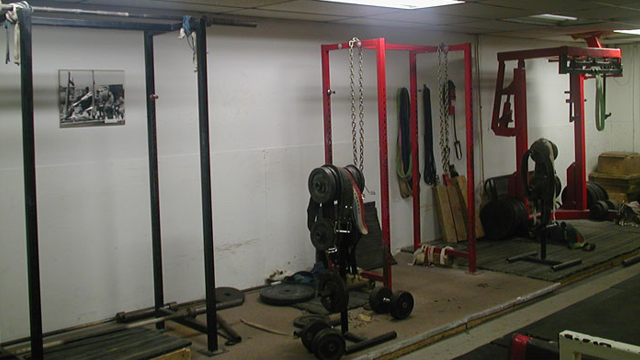
Humble Beginnings
One of the last times I spoke with Louie before packing up and moving to Columbus was right after I tore my pec. "You're going to be out of the sport within a year if you don't change your ways," he said, and it stuck with me. I was going nowhere anyway. What did I have to lose?
Yet it should be noted that I wasn't a Louie Simmons disciple when I arrived at Westside Barbell.
I studied exercise physiology in college and read countless journals. I was strong, experienced, and not easily fooled. Louie talked about speed and dynamic lifting, and none of it jived with what I'd learned.
My earlier impression was that Louie talked a good game but was basically full of shit. I always thought there was some secret method or routine that Louie kept under wraps, and all this speed shit was just to distract the competition. I wanted to find out what that thing was.
When I showed up, Westside was in the process of changing from a commercial-type gym to a private powerlifting club. Louie had sold all the machines to Matt Dimel and took just the powerlifting essentials to a rat hole in West Columbus.
To say this place was a dump is an understatement. There were holes in the floor, and the ceiling leaked. As I recall, there was even some dude living in the basement.
I was just a few days post-surgery and still in a sling. I was stuck training on the machines at Matt's place and doing physical therapy, so all I could do at Westside was spot. That sucked. My weight tumbled from 270 to about 240 before I was finally cleared to lift at Westside.
The gym moved again only a year or so later to a much better place, about twice the size; it was better organized and had no holes in the floor.
This would be my home for the next decade.
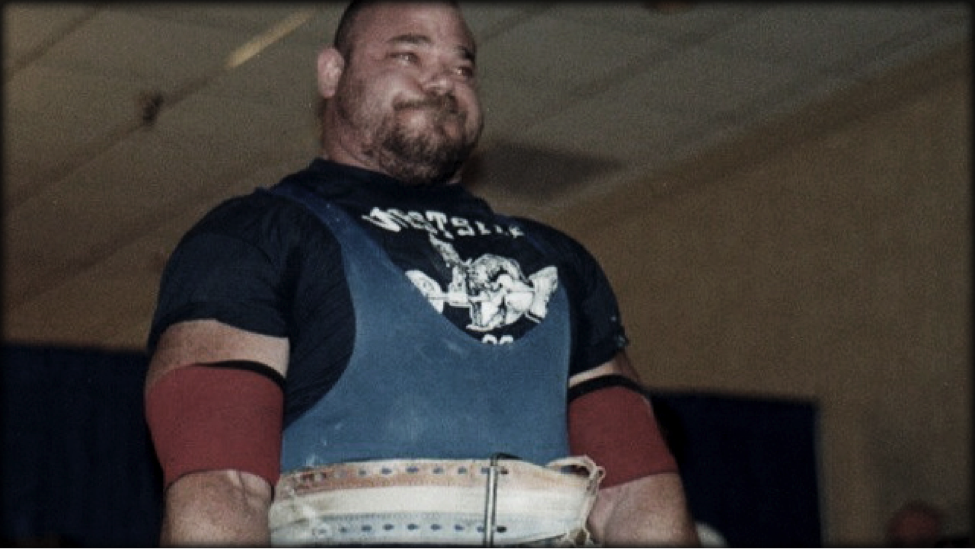
The Louie Simmons Skeptic
Louie's guys trained in the morning or in the afternoon, but being a Louie Simmons skeptic, I opted to train with a small crew at around 1 p.m. I followed my progressive overload program, did a meet, and put maybe five pounds on my total. Progress, sure, but five pounds? I wasn't impressed.
I told Louie as much, and he started busting my chops again about not following his methods. He'd been after me to train his way with the morning crew since I'd arrived, but it didn't fit with my new job. And I certainly didn't see his system as something I should turn my life upside down for.
Louie was persistent until finally, I snapped. I told him that I didn't think his methods would work for me, and just to prove it, I'd quit my job and start training his way — and when I didn't do shit at my next meet, it would be his fault.
Well, that's how I figured it out.
I started training with the morning crew. I followed everything he said. I did a meet and put over 200 pounds on my total.
That's when I realized that the last 15 years of my training and education were bullshit. All the classes I took, the seminars I attended, the coaches I spoke to, and my time in the gym educated me, but it didn't make me the expert I thought I was. What it did do was put me in a position to really learn my trade. My education was about to begin.
Mecca of Powerlifting
Guys online have almost mythologized Westside. People call it the "Mecca of powerlifting" and "the place every powerlifter should aspire to be."
I agree. It is the Mecca of Powerlifting and what I consider to be one of, if not THE strongest gym in the world — but the place wasn't Muscle Beach. It was brutal, both physically and mentally. This is part of what made it work for me.
Guys training at Jerk Off Fitness might not understand this, but when you train at a place like Westside Barbell, there's an enormous amount of pressure. The stress of the weights is one thing; the stress of having the strongest guys in the world expect you to keep up or surpass them is overwhelming. If it's not overwhelming, you're definitely not a good fit for Westside — you expect far too little of yourself.
Becoming exceptional at anything requires commitment, discipline, and sacrifice. At Westside, that gets you in the front door — maybe. To survive at Westside, you must match the level of dedication and sacrifice of the rest of the crew. This alone was a huge challenge. While we did have some "normal" people in the gym, we also had several who bordered on insane. You had to bring yourself up to another level, or you'd get run over or run out.
Responsibility
When Louie told me after I tore my pec that I could be better, it wasn't a vote of confidence he was giving me, but responsibility — responsibility to be better, and if I was going to make it at Westside, I’d better get better.
Louie made me expect more from myself than anyone else. He made me believe that I should be the strongest squatter in the gym, and when I wasn't, the frustration drove me deep into a part of myself that only elite athletes can relate to.
I was told that my potential didn't mean shit unless I realized it, and making that happen was 100% my responsibility. The word “potential” may sound positive, but to a coach like Louie, potential meant, "What's holding you back from being great?"
According to Louie, I was also responsible for making everyone on the team better than me. With most powerlifting clubs, there's usually one King Pooba. It's everyone else's job to make sure Pooba has a good lift. They carry his bag, wrap his knees, and load his weight – it's seen as paying your dues.
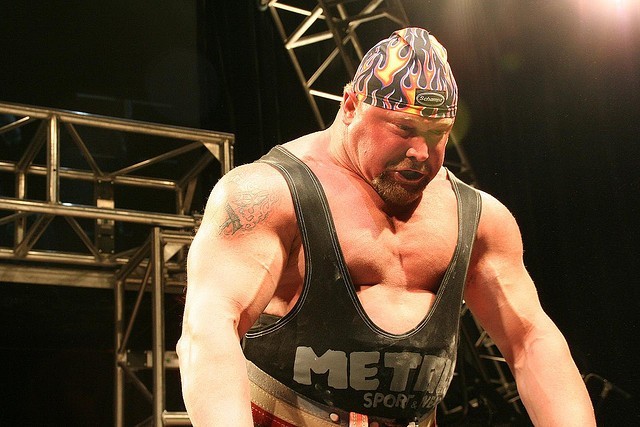
Not at Westside. Our job was to make every other lifter capable of beating you, even if it meant helping the new guy who'd eventually erase your name off the board. It didn't matter if you didn't like the guy — it was your job to make him stronger than you. Then after he beat you, it was his job to make you better than him.
When one group would squat, no one else would do a thing. Say you have 12 guys in the morning crew. Two or three guys would squat, three others would spot, and the remaining eight would coach, yelling cues like "head up" and "knees out." Then we'd all split up and do our accessories.
If you were lifting, all you had to do was lift. You didn't have to change the box, monolift height, look at the clock — nothing. Your job was to squat and give all you have doing it. There was no bullshit chatting; it was about building a better squat.
This created an environment where every time you hit a sticking point, you'd have a dozen guys trying to come up with solutions. Having other strong guys looking for ways to make you strong is better than just tinkering alone. There’s also an ungodly amount of pressure because now you're accountable to those guys to get better. And you better improve.
For me, the issue was always ab strength. So after the main lift, I'd have guys barking at me to do abs with them, and when one of those guys is someone with ridiculous work capacity like Chuck Vogelpohl, you got smashed. Or you got better.
That's why when one of us broke a world record, it wasn't just the guy under the bar that felt pride. We all did because we all worked for it.
Tension
There's obviously a massive downside to this kind of pressure. If you let any stress get to you, it could rip you to shreds. Louie warned us not to let powerlifting be our entire life, but for many of us, it was.
At times, the tension was ridiculous. You're crammed into a small room full of huge guys, all on edge, a second away from exploding. I've seen fist fights during speed bench day, plates get thrown around, and countless uncomfortable heated arguments.
But the training never stopped. Ever. Guys would be at each other's throats on Friday, but we'd be back on Monday because that's when we squatted.
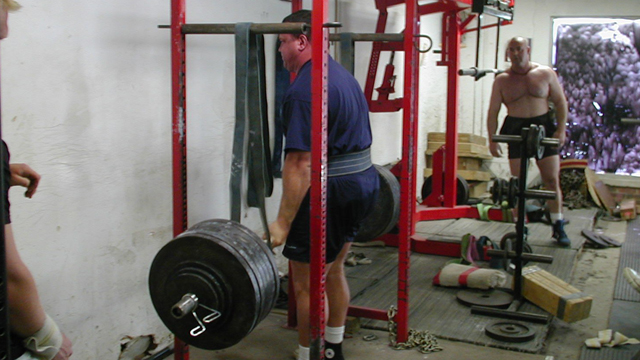
Every gym has drama. We were conditioned not to give a fuck. I trained alongside some people I'd never associate with outside of the gym, but within those walls, they pushed you to get better, and you’d do the same for them. I still have no idea what some of the guys I trained with did for a living. Hell, some I only know by the nicknames we'd given one another. In the gym, we were all the same.
When someone wasn't holding their own, we’d let them know. I'm not talking about the lazy slackers in commercial gyms sitting on the leg extension reading the paper. I'm talking about guys who didn't bring their balls to the gym that day. The ones who weren't willing to push past what they were truly capable of.
Discipline
You weren't allowed to be a pussy. That's where the real mental brutality was.
Louie was the master of finding ways to motivate you. Often he'd tell another lifter that I was going to do shit at an upcoming meet, knowing that lifter would repeat it to me.
I'd get pissed off, but what was I going to do? I could get angry, but the only way to shut him up would be to get stronger. Looking back, there were numerous times when my forearms would cramp up driving home because I was trying to rip the steering wheel off.
Louie would find ways to fuck with you, get under your skin, or use other lifters to mess with your head. The result? There was a meet where our top bencher forgot his shirt. That would've knocked most lifters entirely off their game, but he just borrowed another shirt and benched—no big deal.
Miss my opener? Big deal. Put on 40 pounds. I'll get it.
Nothing could happen at a meet that could compare with what we dealt with at the gym. A guy blew out his knee? Unwrap him and roll him out. It's my turn to squat.
Guys grew to need this mental trauma. They thrived on it. I remember one guy doing Max Effort bench work. He'd worked up to his max and missed, but no one said anything. This enraged him so much that he got up and started ranting.
"I just missed my lift, and none of you guys said a thing!" he yelled. "You guys don't even fucking care!?!"
I knew what to say.
"No one said anything because your bench is shit. Because your triceps are shit. And until you get some triceps and some balls, your bench will always be shit, so we quit caring, and we quit talking about it."
He was about to explode. "I train triceps all the time," he screamed, to which the whole gym laughed.
To the outsider looking in, it would've looked like a scene from an insane asylum — or a prison yard. We were just giving him what he needed.
Brutality
Although I acquired most of my injuries before I arrived at Westside, there was no room there for being hurt. We created an environment of 100 percent balls out all the time. No deloads, no easy days, no quit. If it hurts, wrap it. If it's heavy, fuck you, and pull harder.
I can't blame Louie for this. I couldn't count the number of times he told me to back it down, only to see me add another 40 pounds and blow my nut sack off.
We never gave each other a free pass, especially on Max Effort lower body day. We never knew what movement we'd be doing but always knew the goal – to strain.
We'd start at 8:30 a.m. If you were late and Louie still allowed you to lift, you jumped in at whatever the weight was. If 405 was too heavy to open with, fuck you. Next time, don't be late.
For that reason, we'd always get there early, arriving at about 8 a.m. to eat McDonald's and drink coffee. During that time, we'd ask one another what lift we wanted to train that day. No one would agree on anything until finally, someone would roll in limping and say, "I don't care what the hell we do, as long as it's not low box squats. That would kill me today."
There. It was decided. Today we'll do low box squats.
We were lifters first. We trained Monday, Wednesday, Friday, and Sunday morning. Always. No exceptions. If you had a meet on Saturday, you lifted Monday, just maybe a bit lighter. Christmas, Easter, or Thanksgiving, it didn't matter. If it was one of those days, you trained. And you strained.
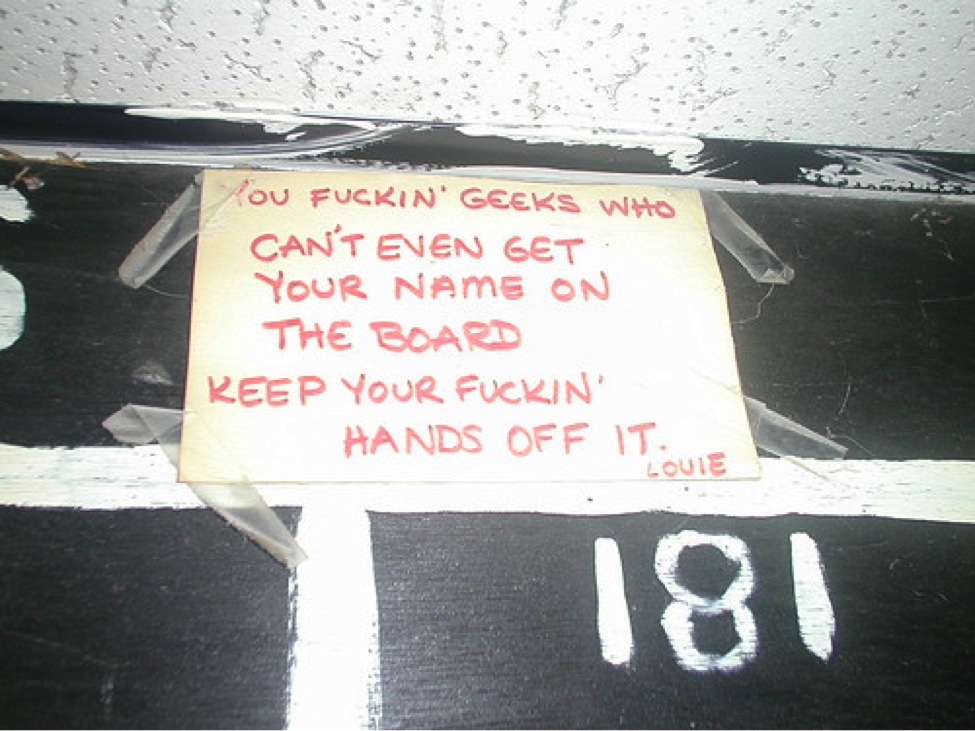
The Board
The ultimate goal of everyone at Westside was to get on the board. It meant more to us than a world record. It pushed you to do better, to join the elite. But as it was written in chalk, it could easily be erased. There was a reason for that. Anyone could erase YOU. Getting up there only meant that now the crosshairs were on you.
Today, the numbers on the board are ridiculous. 2,700-pound totals. 1,200-pound squats. Those who visit see it as "an amazing record board," but to the guys training, it's their reason for lifting. No lifter at Westside was better or more important than another, so every lifter believed they could get up on the board – and knew they'd help another lifter get up there.
Louie had many systems like the board. Every Sunday morning, we'd meet for breakfast at TJ's before heading out to a small garage gym to bench. The catch was that you had to either have totaled elite or benched 500 pounds to get the invite, and the lifts had to have been performed at Westside. My pre-Westside 500-pound bench was irrelevant, so I wasn't allowed to join them.
Again, I was pissed. I deserved to be there, and Louie knew it. It motivated me to train harder, so I could bench 500 again and eat and lift with the Sunday guys. Before long, I got to where I and Louie knew I should be.
Louie's Mental Strength
The fact that Louie was right in there, lifting and straining with us, was hugely motivating. When I first arrived at Westside, Louie was retired. That is, until Kenny Patterson said something during an argument like, "What do you know, old man? You'll never have 800 pounds on your back again."
That was it. Suddenly, a then 50-something Louie Simmons was right in the middle, lifting with us. That was motivating enough, but when that old guy starts beating you, the respect level climbs another notch. Louie Simmons possesses a level of mental strength that is unmatched.
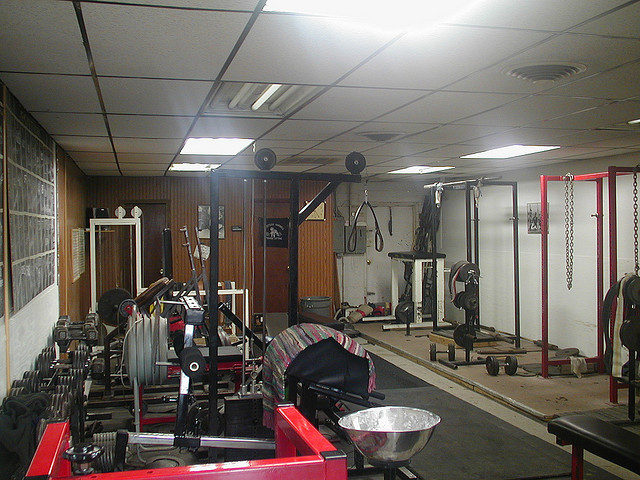
What I'd Change Mentally
As stated, Westside Barbell is constantly evolving and improving. Since my time, they've adapted and changed for the better to keep churning out the strongest lifters in the world, but I can only comment on what I'd change during my time there.
I'd Train Smarter
I tore up my body primarily in my pre-Westside days, but I still would've backed off a bit more while training there. There was no room for being a pussy, but that mentality eventually catches up to you.
I think the current permutation of Westside has moved in this direction. Again, it's purely speculation on my end, but I don't see the frequency and severity of injuries I did during my years there.
I'd keep Zippy out of the gym.
Zippy was the name given to my competitive lifting alter ego. I'd do a set of 455-pound squats that would feel heavy. I'd flip a switch, and Zippy would come out – I'd kill 455 and demand more plates be put on.
All Zippy wanted to do was strain. My back would rupture, and my knees would blow out before Zippy would accept missing a lift.
Zippy was a fantastic tool, but I should've saved him for the meets. Louie frequently reminded us of the vast difference between a competitive and training state, but I rarely listened. When training in an environment like Westside’s, every lift had the pressure of a meet. I let myself become a hyper-aroused competitive lifter far too often when I should've just been a calm, focused (sane) lifter. And I missed many lifts because of it.
Final Thoughts on Louie
Even though I'm long removed from Westside, I'm reminded of Louie's brilliance every day. He didn't invent speed training or the conjugate system – nor has he ever claimed to have invented them – but he made sense of it and put together a cohesive design that delivered results.
The Creator, Not the Recruiter
Westside Barbell has a reputation for recruiting already good lifters. This train of thought ultimately diminishes Louie's abilities as a coach and pisses me off. It's not entirely true.
Louie was taking ordinary local high school kids and developing them into elite lifters, like Chuck Vogelpohl and Kenny Patterson. Westside was the first gym Chuck ever joined. He remembers benching 135 pounds for the first time there. Westside Barbell had produced 40 or 50 elite lifters before anyone from outside Columbus moved to train there. I was the first, perhaps the second lifter, to do so.
Today, Louie has the luxury of having great lifters from around the country, even the world, as they move to Columbus to train under his tutelage. He's paid his dues and earned the right to take the great ones and make them extraordinary.
But if anything, that only further validates how great Louie is. Anyone who’s worked with lifters knows it's much harder to take an elite lifter and make them pro than it is to take a beginner and make them elite. Still, despite opening its doors to the world's best, many of Westside's current top lifters are guys born and raised in Columbus.
The Mad Scientist
New ideas were constantly being test-driven. Some stayed; some were abandoned. In my time at Westside, I witnessed a fair amount of changes: the introduction of the monolift, boards, chains, bands, floor presses, something other than AC/DC playing on the stereo, and more.
I remember watching Louie drop a few hundred bucks on stretching bands at a basketball seminar. Driving back to the gym, I asked Louie if this meant he wanted us all to stretch more.
"No," he said. "We're going to attach them to the platform and wrap the other end around the bar for squats."
Greeeeat, I thought. And so it began...
The Human Calculator
Louie is like the powerlifting Rain Man and could rattle off the exact numbers you needed to move a weight. Are you trying to squat 900 pounds? On your dynamic days, you need 455 pounds and double blue bands.
He also knew your meet PRs and all your max effort records. We didn't need to keep a log because Louie knew your numbers.
He was the master of figuring out (and telling you) why you're stalling. He could tell in a second what assistance lifts you needed to squat, pull, or bench as well as the other guys.
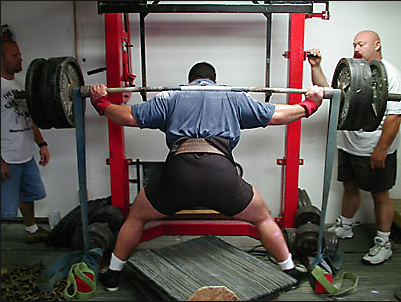
The Ageless Motherfucker
He's also just totaled elite again – at 62 years old! That certainly says something. The guy has totaled elite in five decades!
The Expert Motivator
Although his mind-fuck approach pissed me off more than I care to remember (I know I pissed him off almost as much, so I'm calling it even), I can see now that I never would've accomplished what I did with a more tender approach.
Louie might've told me twice in 12 years that I was doing a good job. But he never once told me I sucked or that I was a failure.
The Incredible Coach
Take 300-pound pit bulls full of anger and adrenaline, each with something to prove, and cram them into a 600-square foot prison cell. Now create not only an orderly environment but also one where every lifter believes they're no better or worse than any other lifter.
These were guys who, to a man, could've walked into any commercial gym and assumed the title of "strongest guy in the gym," but Louie had them all believing they were just spokes in a larger wheel. Think that's easy? Hell, it's even tough to manage the egos on a girls' soccer team.
The Answer
You might be wondering if you're cut out for Westside. Maybe you're strong, really strong, and think you might have what it takes to survive there.
But what about your mental strength?
Getting back to young lifters who tell me they aspire to train there, here's another test I use:
"Why do you want to train at Westside?"
There's only one correct answer: "I want to break world records."
Westside knows what it can do for you. They'll want to know what you can do for Westside?
Be Better
I've always dealt with shit. Overcoming adversity is nothing new for me. Louie reinforced that I can accomplish things if I step up and do the work. I can realize the potential I have.
Louie gave me the mental strength to push my body past my self-imposed limitations. He knew it from day one and had to inspire, show and lead me to it. I may not become the best lifter in the world — but I'd undoubtedly become the best I could be.
More importantly, I became better than I thought I could ever be.
These are lessons in mental strength that have trickled down from training into my business, my family, and how I approach every day above ground. It's made my life so much better, and I have Louie Simmons to thank for it. He taught me that it's possible to be better than your best.










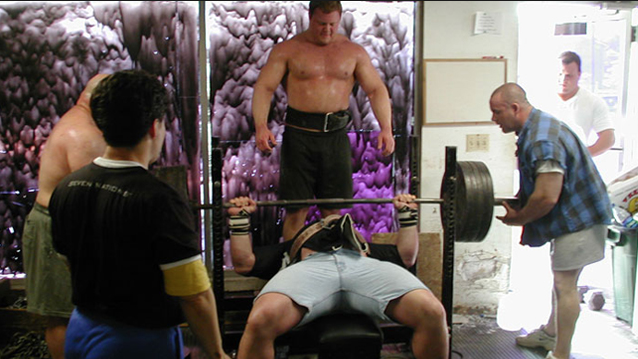

Could you elaborate on why you think this might be so? Is it a gear thing? I've found it better to gauge what I have on my max set when I know I should have at least one rep in the tank whereas I used to get into phases where I'd be failing a 1rm too often.
Back in the day, when Lou was still married to Judy, and I met him when he would drop by the Columbus YMCA once a month to test himself, it was pretty nearly just Louie and me.
My training began then. I was stuck in the squats at 380. He told me how to move the bar down to the groove in your back and, instantly I was squatting 400lbs. Last meet we were in, I squatted 500lbs and pulled 530lbs in the deadlift. Just before I moved on in life, I pulled 615 for 3 reps in Lou's and Doris's basement.
I'm 70 and I've never stopped powerlifting as my way to exercise, though I do other things as well.